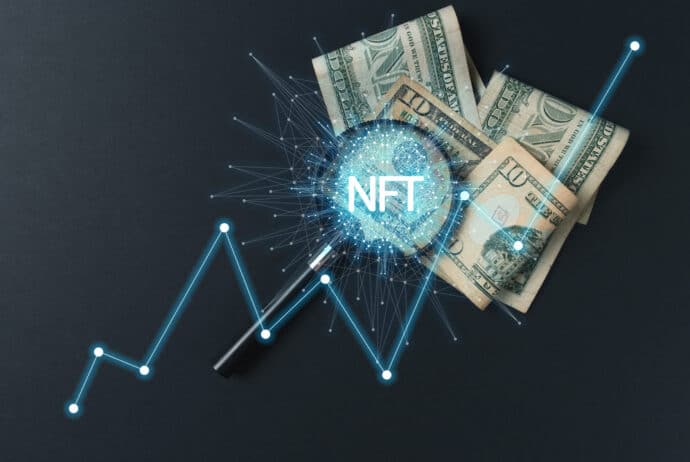According to Dune data, the cumulative volume for taking loans against NFTs reached $1 billion this week. The data indicate that top NFT liquidity providers BendDAO and NFTfi, along with the newcomer Paraspace, make up most of that figure.
As of Monday, BendDAO had facilitated over $295 million, Paraspace boasts about $237 million, and NFTfi hit $390 million. In addition, the number of users has also increased significantly, surpassing 41,000 as per the data.
For a long time, borrowing against fungible tokens like Bitcoin has been the norm, but now NFT holders are seeking ways to unlock their assets’ value without necessarily selling them. Borrowing and lending protocols like JPEG’d have made that possible.

CypherMindHQ.com Artificial Intelligence Crypto Trading System - Surpass the competition with this cutting-edge AI system! Utilize the prowess of innovative algorithms and amplify your crypto trading strategies with CypherMindHQ. Learn more today!
According to JPEG’d head of marketing, Derrick Nguyen, the adoption of NFTs as collateral has become attractive due to the reduced volatility of the NFT market.
Most NFT holders use JPEG’d because of its liquidation insurance. That is, the platform doesn’t instantly sell a user NFT on the secondary market in case they fail to repay their loan. Instead, it allows them to buy their asset back from the JPEG’d DAO.
On the other hand, NFTfi also uses its peer-to-peer (P2P) design to apply its own liquidation mechanism. The platform’s Chief Marketing Officer, Andrej Skraba, says borrowers can only lose their collateral if they fail to repay the loan upon its maturity. He adds that P2P lending gives room for customized loan agreements between the lender and the borrower. This may include terms such as collateral, loan duration and interest rates.
How Does NFT Borrowing Work?
Borrowing and lending services may vary from one NFT liquidity provider to another. Here is how some of them operate:
JPEG’d: This platform allows users to lock up their NFT in its vault and borrow nearly 55% of the NFT value. The users receive loans in synthetic versions of dollars (PUSD) and Ethereum (pETH), which can be exchanged for well-known stablecoins on Curve.
BendDAO: The protocol requires users to make 40% down payments on particular blue-chip NFTs, and a flash loan from Aave covers the rest. In other words, we can say it facilitates a digital mortgage for people who wish to own pricey NFTs like Bored Ape or Mutant Ape.
Paraspace: This platform uses a similar model to BendDAO but has extra features, such as allowing users to stake APE tokens. The firm’s representative says the feature has enabled access to more liquidity. There is also a ‘Buy Now Pay Later’ functionality on the platform that helps Paraspace users to purchase more NFTs.

CypherMindHQ.com Artificial Intelligence Crypto Trading System - Outpace the competition with this high-end AI system! Leverage the capabilities of progressive algorithms and enhance your crypto trading performance with CypherMindHQ. Learn more today!
What’s Next?
Despite the cumulative volume crossing the $1 billion mark, a closer look at the Dune data indicates that borrowing against non-fungible tokens is still in its early days. The data shows that the figure of daily active users on all borrowing platforms is usually low, averaging about 250. In addition, the daily borrow volumes rarely reach $1 million per protocol.
For this space to continue growing, Nguyen says the market should exploit the NFTs’ potential to represent digitalized property rights as well as acknowledge that virtually everything can be turned into an NFT.
Further, Skraba suggests that apart from developing the infrastructure required to unlock illiquid jpegs, the industry must also focus on creating awareness around lending protocols. He claims that most NFT holders are not aware of credit markets.



